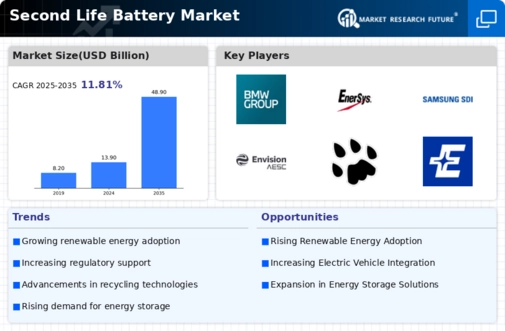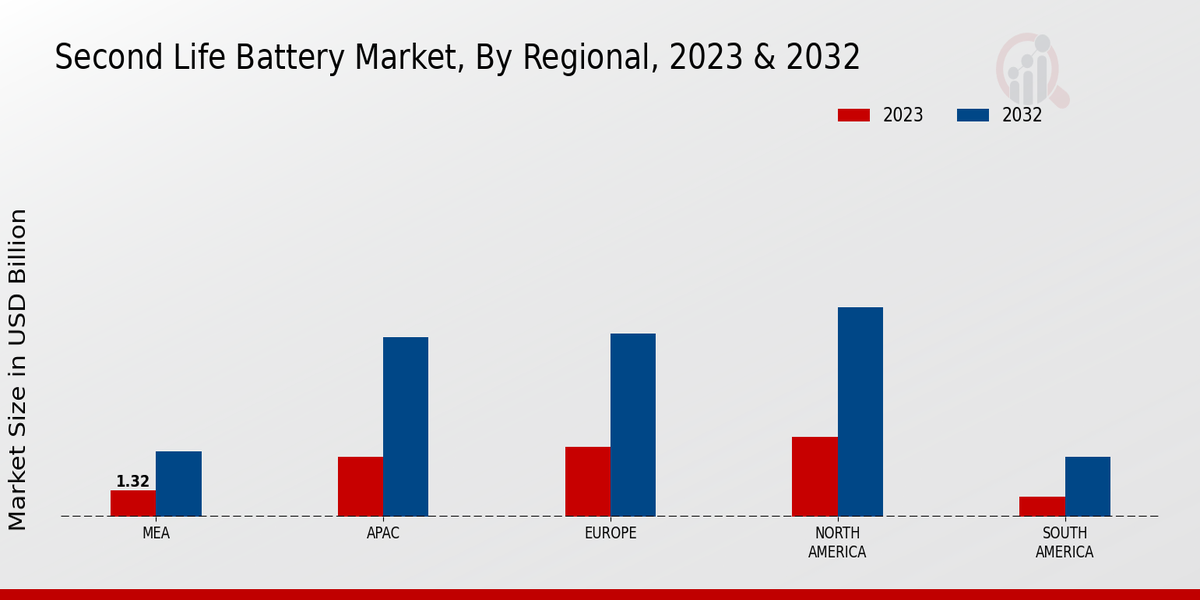Market Growth Projections
The Global Second Life Battery Market Industry is poised for remarkable growth, with projections indicating a market value of 13.9 USD Billion in 2024 and an anticipated increase to 48.9 USD Billion by 2035. This growth trajectory suggests a compound annual growth rate of 12.13% from 2025 to 2035. Such figures reflect the increasing recognition of second life batteries as a sustainable solution for energy storage and management. The market's expansion is likely to be driven by various factors, including technological advancements, regulatory support, and the growing demand for renewable energy solutions.
Regulatory Support and Incentives
Regulatory support and incentives are shaping the landscape of the Global Second Life Battery Market Industry. Governments worldwide are implementing policies that encourage the use of second life batteries as part of broader energy transition strategies. These policies often include financial incentives, tax breaks, and grants for companies that invest in battery repurposing initiatives. Such regulatory frameworks not only stimulate market growth but also foster innovation within the industry. As a result, the market is positioned for substantial expansion, with a projected value of 13.9 USD Billion in 2024, driven by supportive government actions.
Increasing Electric Vehicle Adoption
The increasing adoption of electric vehicles (EVs) is a key driver of the Global Second Life Battery Market Industry. As the number of EVs on the road rises, so does the volume of used batteries that can be repurposed for secondary applications. This trend is particularly relevant as EV batteries typically have a lifespan that allows for additional use in energy storage systems after their initial application. The market is expected to capitalize on this growing supply of second life batteries, contributing to its projected growth to 48.9 USD Billion by 2035. This relationship between EV adoption and second life battery utilization is likely to strengthen in the coming years.
Environmental Sustainability Initiatives
Environmental sustainability initiatives are significantly influencing the Global Second Life Battery Market Industry. Governments and organizations are increasingly focused on reducing waste and promoting circular economy principles. Second life batteries contribute to these efforts by extending the lifecycle of battery materials and minimizing landfill waste. For instance, companies are developing programs to collect used batteries and repurpose them for secondary applications, such as grid storage. This trend not only supports sustainability goals but also enhances the market's growth potential, with projections indicating a market value of 48.9 USD Billion by 2035.
Growing Demand for Renewable Energy Storage
The Global Second Life Battery Market Industry is experiencing a surge in demand driven by the increasing need for renewable energy storage solutions. As countries strive to meet their renewable energy targets, the integration of second life batteries into energy systems becomes crucial. These batteries, repurposed from electric vehicles, offer a cost-effective and sustainable option for storing excess energy generated from renewable sources. The market is projected to reach 13.9 USD Billion in 2024, reflecting the growing recognition of second life batteries as a viable solution for energy storage challenges.
Technological Advancements in Battery Repurposing
Technological advancements in battery repurposing techniques are propelling the Global Second Life Battery Market Industry forward. Innovations in battery management systems and energy conversion technologies enhance the efficiency and reliability of second life batteries. These advancements enable more effective integration into various applications, including residential energy storage and commercial power systems. As technology continues to evolve, the market is likely to witness increased adoption rates, contributing to a compound annual growth rate of 12.13% from 2025 to 2035. This growth underscores the potential of second life batteries to play a pivotal role in future energy solutions.














